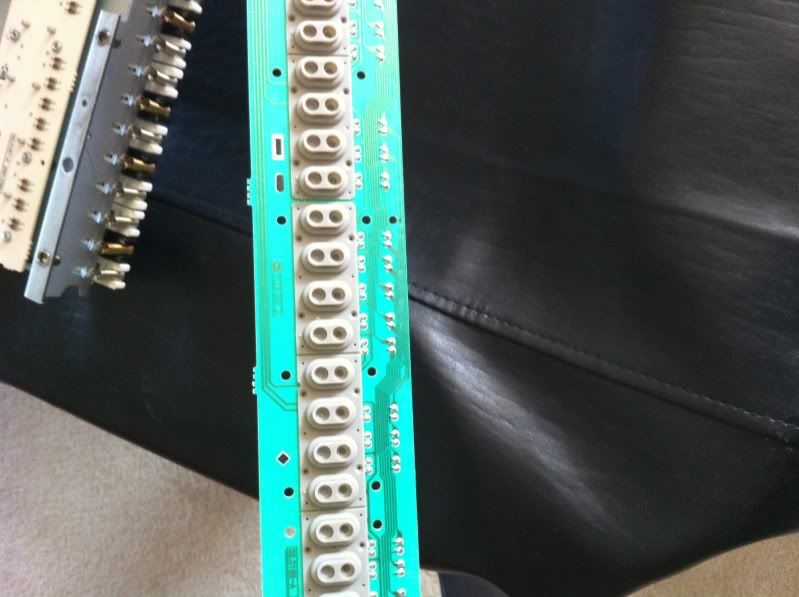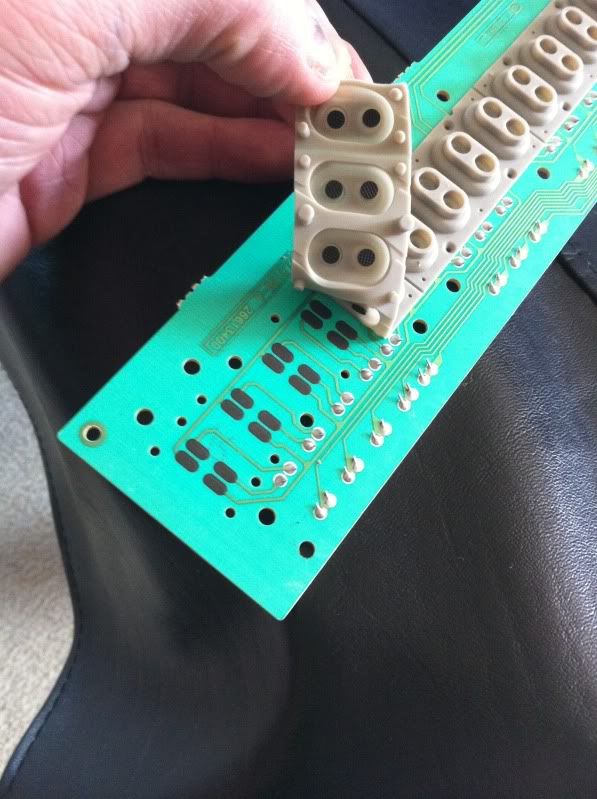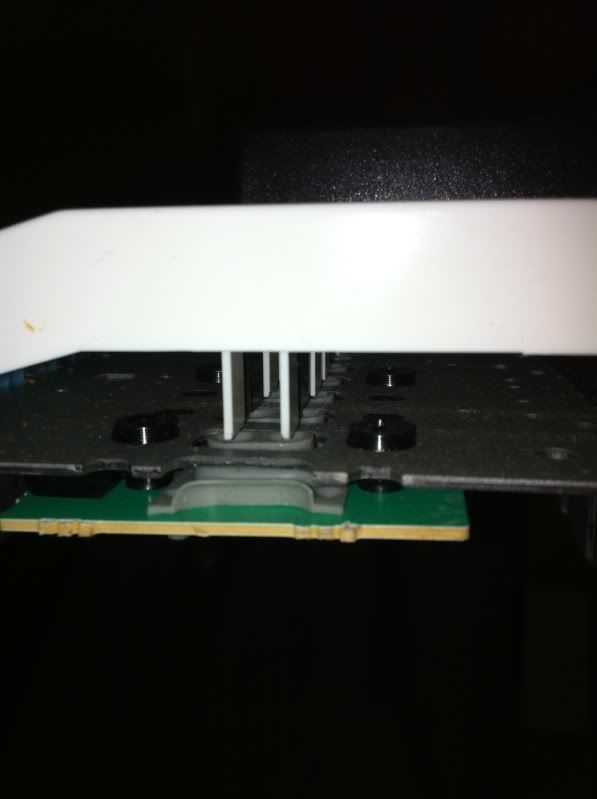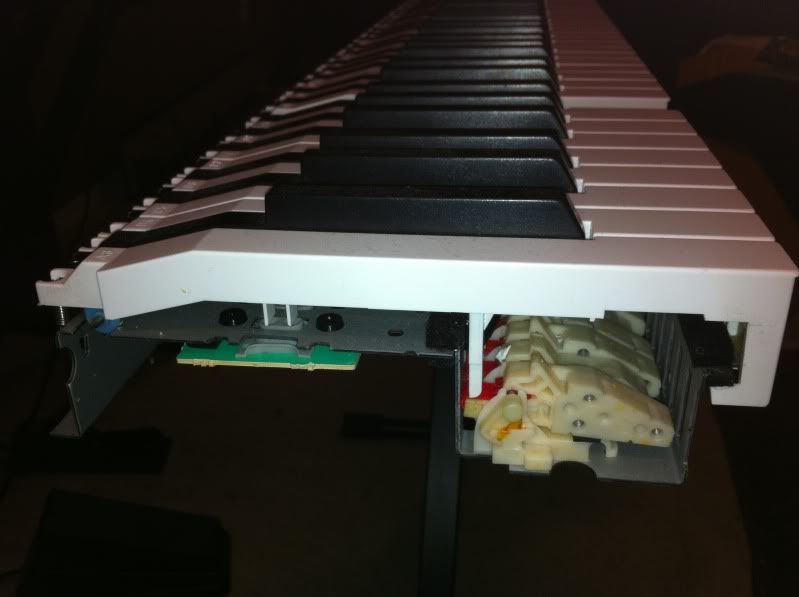Topic: Interesting Video
For those still interested in the acoustic variety:
Glenn
Procrastination Week has been postponed. Again.
For those still interested in the acoustic variety:
Glenn
Hello Glenn,
Thanks for posting this video. This should be required viewing for those interested in the workings of a real piano.
Cheers,
Joe
You are very welcome Joe - I found it interesting and I'm not a technician.
On another topic, can you answer the question about Duplex scaling posed by olivierf?
Glenn
I think this video clearly explains why a good piano is expensive and why it is so hard to emulate the key action on a "cheap" controller keyboard.
The mechanics on a piano keybed is really a piece of art.
Fascinating! thank you...takes a very patient person to repeat these many, many minute steps 88 times! Keep us posted for the next episode!
I just would like to know how are the sensors of good brand digital pianos, like Roland and Kawai, and how are they placed.
Maybe could be possible remove the sensors and place in real piano actions, like the action we see in this video.
It would be way cheaper, just jet the senosrs and circuits of a digital piano, and get the actions of a used piano, and voilá.
If someone find diagrams or ilustrations of the placement of sensors in a digital pianos, please post the images in this forum.
I just would like to know how are the sensors of good brand digital pianos, like Roland and Kawai, and how are they placed.
Maybe could be possible remove the sensors and place in real piano actions, like the action we see in this video.
It would be way cheaper, just jet the senosrs and circuits of a digital piano, and get the actions of a used piano, and voilá.If someone find diagrams or ilustrations of the placement of sensors in a digital pianos, please post the images in this forum.
Beto:
Yamaha calls their system "Disklavier". Bosendorfer has a system called "CEUS", and of course Modartt has a collaboration with PNOscan II that can be installed in an acoustic piano.
http://www.qrsmusic.com/storyclark-p.as...p;pid=3394
http://www.pianoteq.com/catalog
The Minnesota International E-Piano competitions use the Yamaha system - a competitor plays a piano in a city near them, and the judges may be somewhere else in the world listening in real time to the music being played by a piano in front of them (except there is no one sitting at the piano).
http://www.piano-e-competition.com/ecom...yamaha.asp
Glenn
Thank you Glenn
But I was informed about all this.
The question is the price. All tose real actions models are really very expansive, and the optical sensors for real piano are very expansive to.
See this links:
http://www.pianoworld.com/forum/ubbthre...rong_.html




The digital piano sensors are quite simple, and placed some few centimeters after the balance point (like the center of a seesaw).
If a true piano actions could be altered a little, to place these sensor and circuit strip, maybe could work. But the mininaml imbalance, misadjustment of the key, would mess everything.

Something says to me that the precision it's a problem... Wood it's not stable like steal and hard synthetic plastics...
Think with me... Wouldn't the sensors be more precise if the distance between the two sensor (that give key speed calculating the delay beetween the two sensor activation) was a little more long ?
Something says to me that the precision it's a problem... Wood it's not stable like steal and hard synthetic plastics...
Think with me... Wouldn't the sensors be more precise if the distance between the two sensor (that give key speed calculating the delay beetween the two sensor activation) was a little more long ?
Beto:
I don't know enough about how the sensors work to comment on that.
I haven't seen either the Bosendorfer or Yamaha systems, but my piano rebuilding friend removed the Disklavier system from a Yamaha piano a few years ago (the person buying the piano didn't want it) so I could have a look at the parts to see where the sensors mount.
But, there really isn't anywhere else to put them but under the keys (mounted on the keybed), and I'm quite sure that these well known companies would not be using these systems unless they could rely on them to accurately reproduce the sound.
Glenn
No Glenn, you got it worng...
I'm afraid I did not explained right.
The sensor that appear in anexed images are not the same kind drom the ones used in disklavier system or Gransd Touch system, but just ordinary sensor of common digital piano.
Grand Touch, disklavier use precise optical sensors. And yes, are such systems are very reliable, once adjusted and calibrated right.
The problem is that they are very expansive. Maybe if the sensor get popular the price get lower.